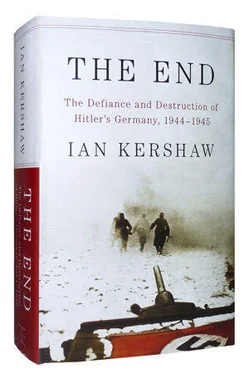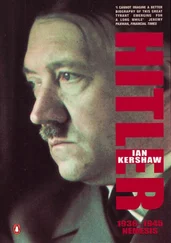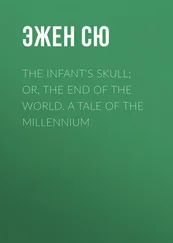in the Dönitz cabinet 360, 377, 378
scorched earth policy 64, 112, 141, 288
Dönitz’s reversal of 367
Hitler’s Nero Order on (March 1945) 290–91, 303, 309, 367; Speer’s opposition to 290–91, 303, 309
industry, German plans for immobilization/destruction of 42, 80, 81, 82, 140–41, 286–7, 288, 289, 290–91
see also economic collapse
secret weapons see armaments, miracle weapons
Seelow Heights 302
Seldte, Franz (Labour Minister under Dönitz) 360
Seyß-Inquart, Arthur (Reich Commissar in Netherlands) 358
Allied powers, his negotiations with 358–9, 363
Sicherheitsdienst (SD; Security Service) 18, 25, 31, 61, 73, 99, 117, 191, 261, 271, 316, 356, 359, 380
Silesia 214, 252
evacuation of 182–3, 189–90, 262
Groß-Rosen concentration camp 232–3, 329
Silesian industrial area 167, 168, 172–3, 182, 187, 190, 195, 244, 252, 287
Simon, Gustav (Gauleiter of Koblenz-Trier) 65–6
Smend, Oberstleutnant Günther 29
Smith, General Walter Bedell see Bedell Smith
Sobibor extermination camp 214
Solingen 297, 314–15
Soviet air force 169, 173, 179, 180, 301
Soviet army see Red Army
Soviet Union 15, 18, 31
German fear/hatred of 70, 98–9, 120, 121–2, 222–3, 256, 271–2, 282, 306, 310, 349, 351, 362, 368, 373, 385
German invasion of (June 1941) (Barbarossa) 13, 46, 120, 359; Stalingrad, battle for (1942–3) 13, 23–4, 29, 46, 92, 94, 208
German prisoners of war in 94, 254, 368, 369, 371, 375; deaths among 375
German propaganda against 98, 187, 195, 223–4, 313, 356
Goebbels proposes separate peace with 95–6
Hitler on 130
as an occupying power 379
under Stalin 95–6, 154, 246, 371–2
Spaatz, General Carl, German surrender, signatory to 372
Spain see Guernica
Speer, Albert 11, 25, 64, 90, 134–6, 138–42, 244, 346
as an architect 24
as Armaments Minister 11, 23, 24, 25–6, 35, 43–4, 53, 77, 78–83, 134, 140–42, 170, 287–8, 291, 396
Bormann and 77, 78, 83
character/personal appearance 24, 80, 82, 83, 134, 141, 164–5, 244, 289, 336
criticism of 77–8
on defence of the Reich 288–9
Dönitz as Reich President and 352, 360, 378
on economic collapse 244, 258, 287–8, 289
exit strategy 286, 336
Gauleiter, relationship with 290–91
Goebbels and 24, 25, 43, 75, 76–9, 83, 146, 244, 287–8
Guderian and 398
Hanke and 321
Heinrici and 309
Himmler and 240–41
Hitler and 38, 42–4, 77–8, 160, 289, 291, 292, 399
Hitler, mentions possible assassination of to Heinrici (April 1945) 309
on labour supply 25–6, 37, 38, 76–9
Model and 290–91
post-war interrogation/statements 134, 289, 398
scorched earth policy, opposition to 390–91, 303, 309
his Status Report (January 1945) 244
Western Front, visits to 78, 80–81, 138–40, 287, 290–91
sporting activities 6
Sprenger, Jakob (Gauleiter of Hessen-Nassau) 261
SS (Schutszstaffel) (Protection Squad) 69, 84, 86–7, 180, 219, 263, 279, 296, 320, 322, 324, 341, 359, 370, 389, 391
as concentration camp guards 228, 229, 230, 332, 333–4
concentration camps, evacuation of see death marches
criticism of 212
Himmler as head of see Himmler, Heinrich
as Hitler’s bodyguards 253, 284
morale 153, 210
power/influence 208
suicide among (April 1945–on) 356
transfers from, to Wehrmacht 308
Waffen-SS see Waffen-SS
in Warsaw 93
Wehrmacht and 23
young recruits to 313–14
SS Railway Construction Brigade 143
Stalin, Joseph 95–6, 104, 246
the west, his suspicion of 371–2
see also Soviet Union
Stalingrad, battle for (1942–3) 13, 23–4, 29, 46, 92, 94, 208
Standgerichte (summary courts martial) 224–5, 243, 263, 326–7, 343, 360–61, 390–91
see also courts martial
state penitentiaries 391
execution of prisoners in 328
von Stauffenberg, Count Claus Schenk Graf 33–4, 35
Hitler, plot to assassinate (July 1944) 12, 13, 14, 29–35, 36, 43, 44, 46, 48–9, 53, 268, 387, 396; effect of 379, 385, 388–9, 394; public opinion on 31–3
steel production see iron/steel production
Steiner, SS-Obergruppenführer Felix 339, 352
Stettin 250
Strasbourg 131
Strölin, Karl (mayor of Stuttgart) 325
Stuckart, Wilhelm (Secretary of State, Ministry of the Interior) 38, 102, 216, 359
Dönitz as Reich President and 359, 378
Student, Colonel-General Kurt 253
Stumpff, Colonel-General Hans-Jürgen, German surrender, signatory to 372
Stuttgart 6, 117, 124, 299–300, 325
Strölin as mayor 325
Stutthof concentration camp 184, 234
evacuation of 234, 329
Sudetenland 252
suicide
among civilian population 177, 213, 215, 356–8; numbers of 356–7
by Gauleiter 356
Hitler’s 6, 11, 12, 118, 295, 339, 346, 348–51, 357
by Nazi Party members (April 1945–on) 355–6
by Wehrmacht officers (April 1945–on) 355, 356; numbers of 356
suicide bombers/fighters, proposal for 278–9, 314
Susloparov, General Ivan 371–2
Swabia 245, 278, 316
Sweden 94, 230, 282, 283
concentration camp inmates, attempts to negotiate release of 228, 284
Swedish Red Cross 283
Switzerland 230
attempt to exchange Jews for cash 229–30
Zurich 285
tanks/tank warfare 46, 58, 59, 61, 63, 81–2, 160, 168, 169, 174, 260, 301, 302, 339, 357
Tedder, Air-Marshal Arthur W., German surrender, signatory to 372
terror tactics 3–4, 5, 8–9, 10, 14, 37, 84, 162, 207–8, 216–25, 256, 259, 272, 273, 296, 318, 321–9, 343–4, 391, 393
crimes of the last phase concept 323–9, 391–2
torture, use of 84
Werwolf activity 279–80, 318, 320, 344, 367, 369; numbers killed by 280
see also Nazi atrocities; totalitarian regimes
Thiele, Gerhard 333
Thierack, Otto Georg (Justice Minister) 224
Thuringia 297, 299
Tilsit 173
von Tippelskirch, General Kurt 340
Todt, Fritz 24
Torgau 339
total war concept 23–4, 25–6, 38, 44, 60, 61, 146
see also Goebbels, Joseph, as Reich Plenipotentiary for Total War
totalitarian regimes 8–10
as repressive 8–9, 84, 207–8
see also terror tactics
transport 102, 126, 135, 139, 190, 193, 205, 275, 290
Allied bombing, effect on 79, 82, 136, 137, 138, 140, 142–3, 144, 287, 299
railways see railways
Reichsbahn 138, 140
Treblinka extermination camp 214
Trier 62, 64, 65–6
capitulation 254, 259–60
von Trotha, Colonel Thilo 221
U-boats 55, 95, 137, 139, 147, 155, 245, 269
Baltic harbours for 94
cessation of U-boat war 367
Ukraine 92, 93
unconditional surrender 7–8, 10, 50–51, 71, 246, 271, 354, 361, 362, 369, 370–71, 386–7, 397
Churchill on 387
see also German capitulation
underground movements (German) see Werwolf . . .
United Kingdom see Britain
United States (US)
Hitler on 130
Morgenthau Plan 149–50
US Army see American Army
Upper Bavaria 189
see also Bavaria
V1 missiles 20, 62, 210, 269
V2 rockets 24, 153, 269
Versailles Treaty (June 1919) 98, 154
Vienna 213, 252
Nazi Party 317–18
Red Army capture of 301
von Vietinghoff-Scheel, Colonel-General Heinrich 204
as C-in-C Italy 266–7, 285, 363; German capitulation and 267, 363, 366; dismissal 366
Vistula river 168, 172, 174, 196, 250
Читать дальше












